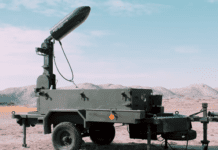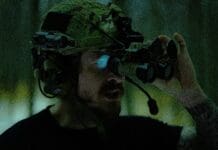This post is also available in:
 עברית (Hebrew)
עברית (Hebrew)
The United States Navy along with Boeing have recently tested controlling an unmanned aircraft with a manned jet. This capability is considered to be critical for staying relevant in the world of 21st century naval aviation.
The Navy flew two unmanned E/A-18G Growlers with a third, manned fighter aircraft. The manned aircraft acted as mission control for the two unmanned aircraft.
The test was in order to prove the effectiveness of technology that allows E/A-18G Growlers and F/A-18 Super Hornets to perform missions alongside unmanned aircraft.
“This demonstration allows Boeing and the Navy the opportunity to analyze the data collected and decide where to make investments in future technologies,” said Boeing’s manned-unmanned teaming demonstration lead, Tom Brandt. “It could provide synergy with other U.S. Navy unmanned systems in development across the spectrum and in other services.”
The United States Navy has been relying more and more on networking weapons and unmanned systems in an effort to strengthen the service’s capabilities and fighting range. C4isrnet.com reports that all this is part of a concept from a study that details the feasibility and manner of operating manned-unmanned systems.
The study calls from an unmanned combat air vehicle capable of flying 3,000 nautical miles without refueling and capable of performing a range of missions from electronic warfare to anti-submarine combat. The study also calls for a manned aircraft to operate as a command and control suite for the unmanned aircraft in areas where communications are jammed.
The researchers that took part of the study mention a modified F-35 as the potential candidate for the command and control aircraft. The F-35 should be remodified to switch out its internal payload with additional fuel tanks, making it a longer range aircraft. Other modifications would mainly involve the aircraft’s software, which is less a challenge than modifying the aircraft’s physical components.
Furthermore, the F-35’s pilot will also benefit from additional situational awareness which is obtained via the unmanned aircraft flying alongside the F-35.
“This technology allows the Navy to extend the reach of sensors while keeping manned aircraft out of harm’s way,” said Brandt. “It’s a force multiplier that enables a single aircrew to control multiple aircraft without greatly increasing workload. It has the potential to increase survivability as well as situational awareness.”

























